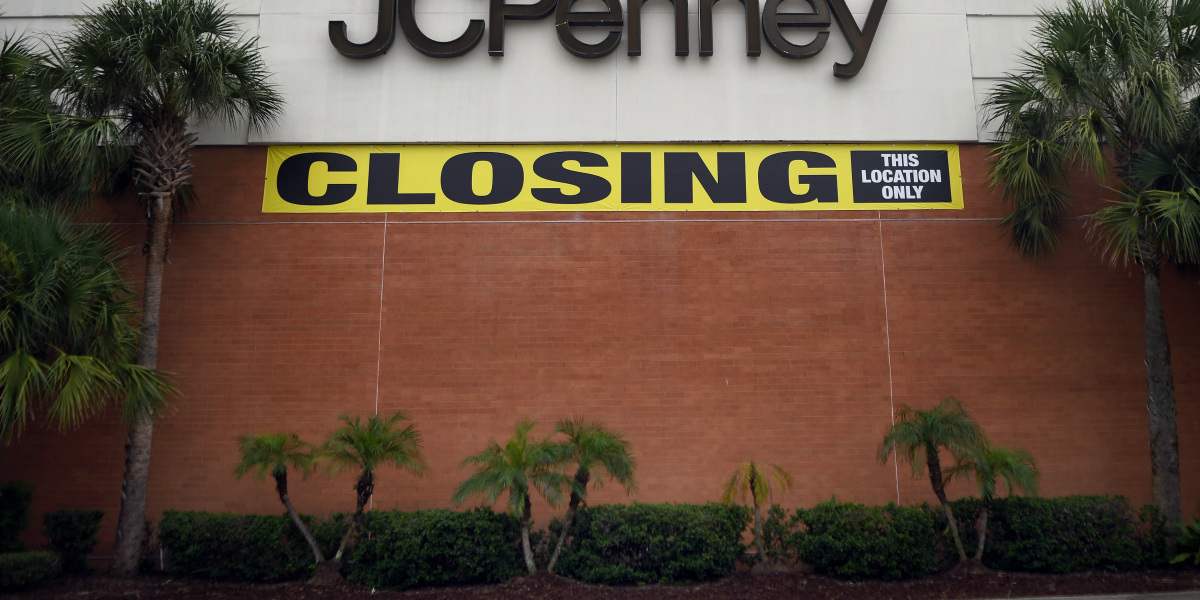One industry after another saw activity grind to a near halt in March as the pandemic broke out in the United States. Retailers contended with stores closed for weeks and shoppers too shellshocked to spend on anything but essentials; energy companies faced big declines in demand and, by extension, prices; health care companies dealt with the sector’s shift toward addressing COVID and away from more standard care—and the list goes on.
The result has been 610 bankruptcies as of Dec. 13, according to S&P Global Market Intelligence. That statistic is the highest it’s since 2012, according to the ratings agency and compares to 552 bankruptcies over the same period last year. (S&P tracks companies, private or publicly traded, with debt traded on the markets.)
Few sectors were spared by the pandemic-fueled recession, judging by the roster of 2020 bankruptcies. That list includes retailers such as J.C. Penney, Neiman Marcus, and J.Crew, car rental giant Hertz, mall operator CBL & Associates Properties, Internet provider Frontier Communications, oilfield services provider Superior Energy Services, and hospital operator Quorum Health.
The wave of bankruptcies was particularly brutal for department stores, clothing companies, and other retailers selling nonessential goods. Consumers gravitated to big-box stores where they could do all their shopping under one roof, and they focused on things like food and home improvements. About 20% of the bankruptcy filings were by nonessential retailers, according to S&P—far more than any other category.
Even as the rollout of vaccines begins in the United States, giving people a much needed morale boost, 2021 will still be a tough one for U.S. companies overall.
Retail, in particular, is likely in for additional pain. As November’s soft consumer spending numbers show, Americans are quick to hold back in the absence of support for the millions without work, or in the presence of new restrictions. And mass vaccinations, which may alleviate the situation, are still months away.
The ratings agencies are keeping a close eye on companies they consider distressed to see how they fare in 2021. On the retail side, that means businesses such as Jo-Ann Stores, Rite-Aid, Party City, and Belk; in the restaurant sector, they include Potbelly and Noodles & Co.
The agency expects overall profits to be up in 2021 since retailers won’t have to invest as much in things like plexiglass dividers, curbside pickup areas, and other such items. But companies that were struggling before the pandemic, and somehow slogged through 2020, are very far from being out of the woods.
“You’re going to see some weaker players fall off,” Moody’s vice president Mickey Chadha tells Fortune.
Here are some of the most notable 2020 bankruptcy filings across different industries, with size of liabilities at the time of a company’s Chapter 11 petition:
- Frontier Communications ($17.1 billion): The phone and Internet service provider choked under an enormous debt load and investments in fiber infrastructure that came too late. Yet Frontier is poised to emerge from Chapter 11 soon.
- Neiman Marcus ($5.3 billion): The luxury department store’s weak balance sheet proved untenable at a time of declining store sales and upscale brands getting more aggressive about selling via their own stores and sites. It has emerged from bankruptcy protection but faces more of the same tough landscape.
- Diamond Offshore Drilling ($6.3 billion): A record drop in crude oil prices as the global economy practically shut down in spring destroyed demand for oil exploration at sea.
- Tailored Brands ($1.5 billion): With millions of men working from home during the pandemic, the parent company of suit purveyor Men’s Wearhouse, still struggling to digest its 2014 acquisition of Jos. A. Bank, experienced an untenable sales plunge.
- The McClatchy Co. ($1.5 billion): The newspaper company had been struggling with declining print subscriptions for years, leading to its bankruptcy filing in February.
- CBL & Associates Properties (more than $1 billion): The mall operator’s second-tier properties have been grappling with declining shopper visits for some time, and COVID-19 pushed the company over the edge.
- 24 Hour Fitness Worldwide (more than $1 billion): Gyms were among the first businesses closed during lockdowns and the last to be allowed to reopen, leading to enormous strains on the finances of chains like 24 Hour Fitness.
- Hertz (more than $1 billion): The near halt in travel, particularly business travel, proved too much for a company struggling to deal with threats to its business model, forcing it to restructure its debt.
- Quorum Health (more than $1 billion): The operator of 24 hospitals struggled with a heavy debt load made tougher to bear as the COVID-19 pandemic reduced its ability to perform elective procedures that are most profitable to hospitals. (It exited Chapter 11 in June.)
- J.C. Penney, J.Crew, Ascena Retail (Ann Taylor), Stage Stores, and Stein Mart: These retailers had been wobbly long before COVID-19 arrived and decimated apparel spending, exposing their weaknesses.
More must-read retail coverage from Fortune:
- Could Biden finally get the national minimum wage to $15?
- Inside the cottage industry trying to revive Aunt Jemima and other brands with racist roots
- Poshmark, newly profitable, files for IPO
- How FedEx, UPS, and Amazon prepared for holiday shipping deadlines this year
- Why Adidas is finally putting Reebok up for sale

